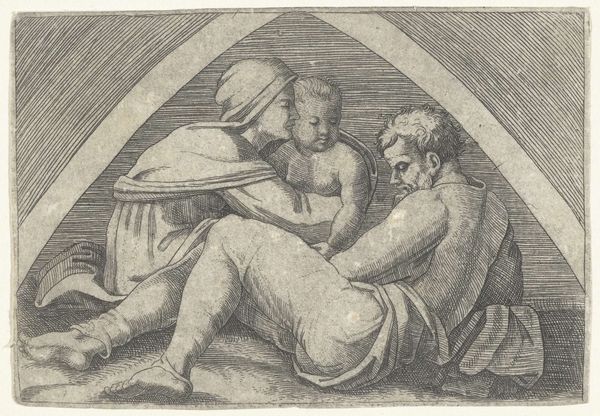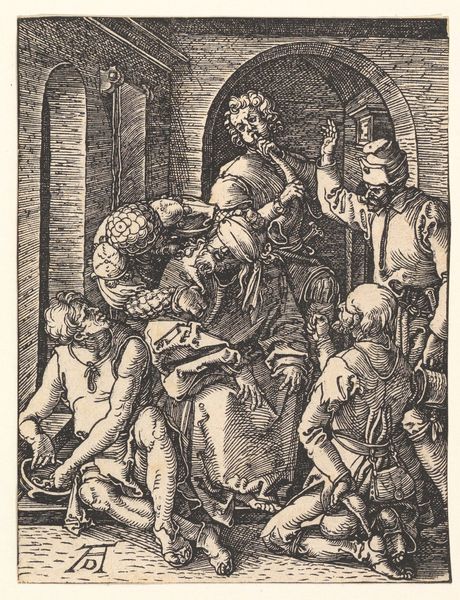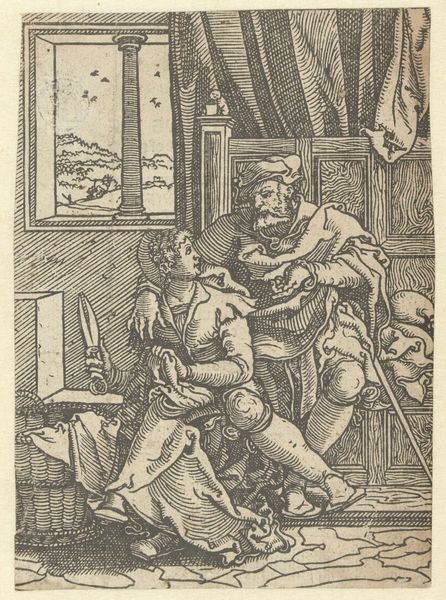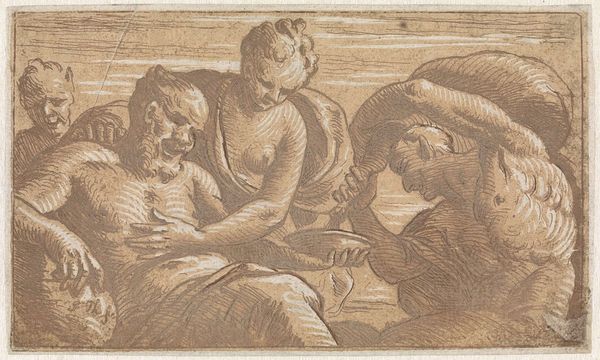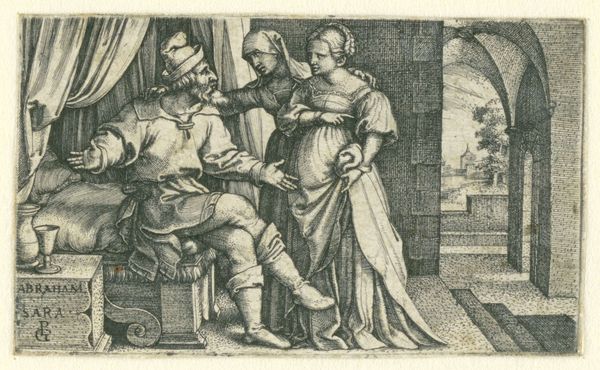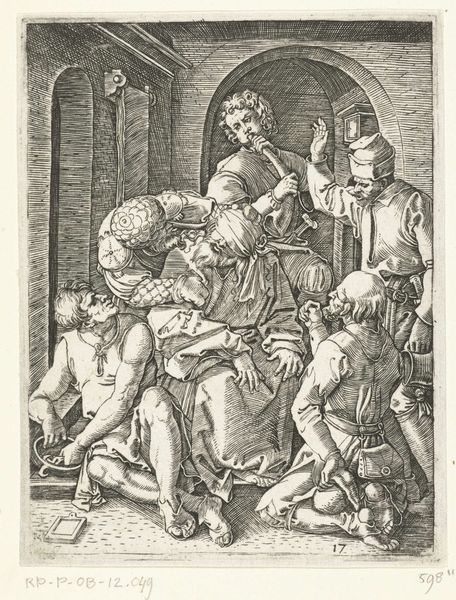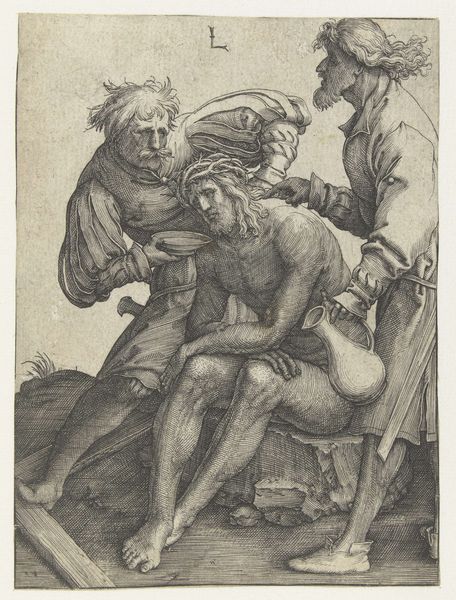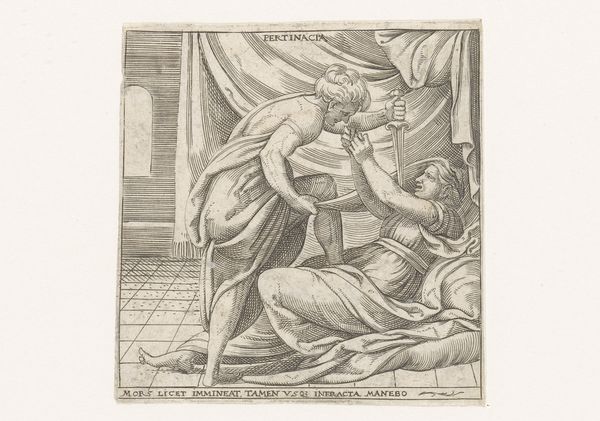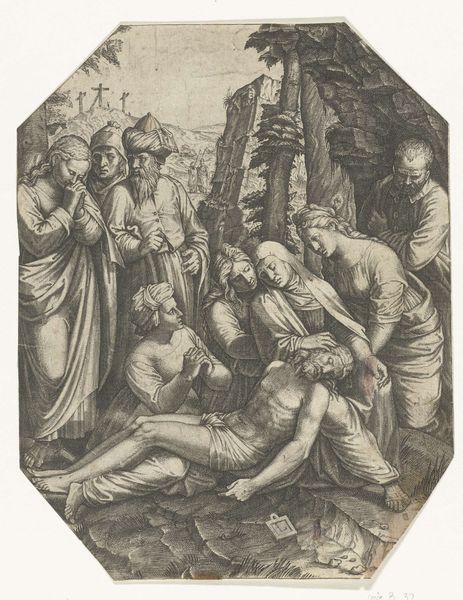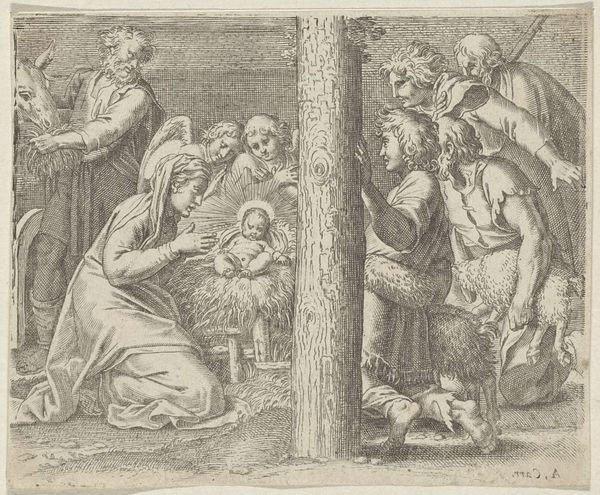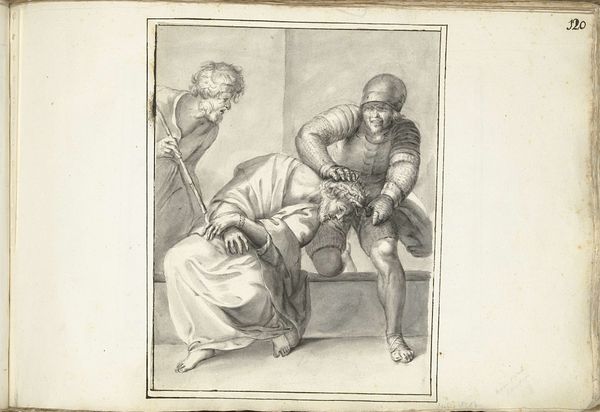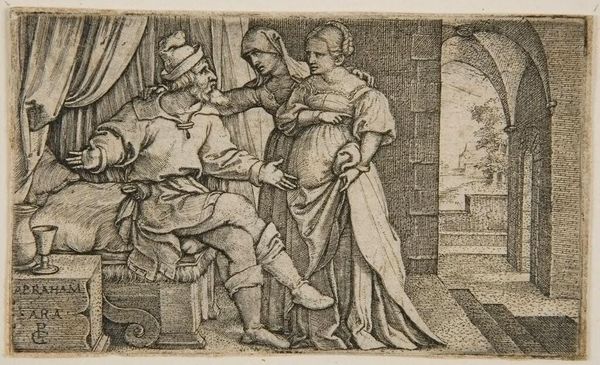
print, engraving
# print
#
figuration
#
history-painting
#
italian-renaissance
#
engraving
Dimensions: height 87 mm, width 121 mm
Copyright: Rijks Museum: Open Domain
Editor: This engraving, "Holy Family under an Arch", comes to us from the early 16th century and is housed here at the Rijksmuseum. It seems rather…austere, I suppose. All line and shape. What can you tell me about it from an art perspective? Curator: Let's observe closely the engraving's formal construction. The composition relies heavily on linear precision and a strategic distribution of light and shadow, wouldn't you agree? Note how the arch not only frames the Holy Family but also dictates the internal structure, segmenting the space. Editor: Yes, the lines are incredibly precise. How does that contribute to the artwork's meaning? Curator: Notice how the engraver's expert use of hatching and cross-hatching creates volume and texture, thus generating a tonal range within the monochrome. Look at the faces. Does this considered arrangement lead you to feel anything specific? Editor: It makes me focus on the geometric structure. There's a deliberate sense of order to it. Almost mathematical, yet softened by the subject matter. Curator: Precisely. Consider then, how the formal elements are working to portray a sense of harmony. Are we looking at divine order through visually structuring this image? Editor: The composition certainly invites contemplation and suggests a spiritual consideration, rather than the focus of the actual figures. It’s clever how line becomes meaning here. Curator: Indeed. Now we can interpret not only subject matter, but also the artist's intention behind the arrangement. Editor: Thank you! That breakdown really changed my perception of it. I see much more in the art itself now!
Comments
No comments
Be the first to comment and join the conversation on the ultimate creative platform.
